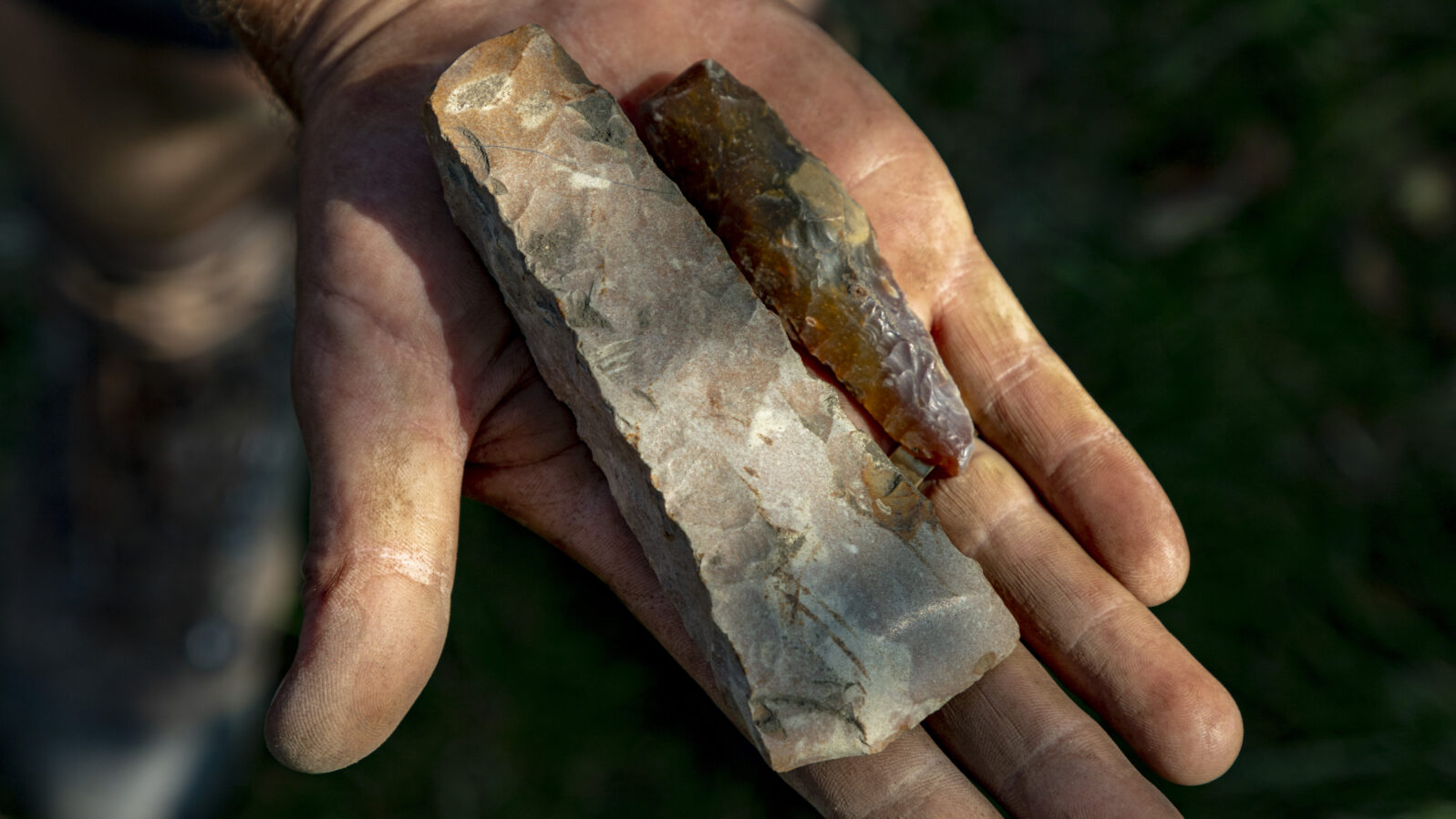Researchers: Early Humans Chose Their Toolmaking Rocks With Care
Different types of flint were useful for different purposes 70,000 to 30,000 years ago
Researchers studying tools from 70,000 to 30,000 years ago in the Middle East have found that the tool makers were careful about which rocks they selected. The research group, led by Nagoya University Museum, noted that during this period (the Middle and Upper Paleolithic) obsidian and flint were common choices:
They believe Paleolithic humans understood which rocks were appropriate for making tools and, therefore, intentionally searched for them. According to their hypothesis, Paleolithic humans intentionally searched for flint that was translucent and smooth, as it could be easily broken off the rock face and shaped into sharp edges.
Nagoya University. “Paleolithic humans may have understood the properties of rocks for making stone tools.” ScienceDaily. ScienceDaily, 1 December 2023.” The paper requires a subscription.
In one sense, that should hardly be surprising. If a rock is unfit for purpose, the toolmaker will waste a lot of time and the group will be missing essential tools. Experience keeps a hard school and one suspects that some mistakes were not often repeated.
Interestingly, the researchers found, using assessment instruments, that fine-grained flint fractures from rock with less force than medium-grained flint and it was used to make many small stone tools 40,000 to 30,000 years ago. But before that, 70,000 to 40,000 years ago, medium-grained flint was a more common choice, even though it was not as easy to use. Fortunately, the researchers did not just conclude that the earlier peoples were just dull-witted:
On further investigation, the researchers found that much of the fine-grained flint in the area suffered from abundant internal fractures caused by geological activities, which would have made it unsuitable for large stone tools, such as Levallois products and robust blades.
Therefore, it seems that Paleolithic humans selected the medium-grained flint for large tools, even though it was a tough material to modify into tools, as it was more likely to last longer. This offers a fascinating insight into our ancestors’ behavior, as they selected flint based on many factors other than just how easy it was to fracture and could discern the most suitable rock to use to make stone tools.
Nagoya University. “… the properties of rocks”
Clearly, these ancient humans calculated how much time and trouble they faced in order to make a specific tool, in relation to how much use it would be for specific tasks — much as we do today. As noted before, the human mind has no history. When we see it, we do not see a slow development; we see it in action. Like other immaterial entities, it does not need a history in order to exist.
Here is one way to make a flint cutting edge:
You may also wish to read: When did humans first start burying the dead? One of the things paleontologists look for is special care taken in the placement of the deceased’s body. How could the insight that the human mind is not material and cannot really die the way the body dies get started? Did it always exist?
